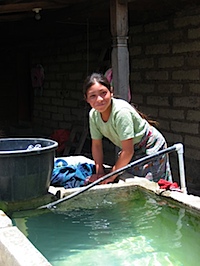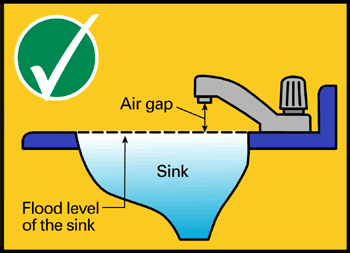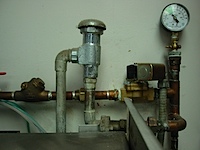 I just read this article sent to me by another PCV. For those of you that don’t read Spanish, it says that most water in Guatemala isn’t potable, even in urban areas where 70% of houses receive chlorinated water via a public plumbing system. Fecal coliform bacteria is still present in most samples taken, causing all sorts of illnesses. During our health talks, I often get asked by locals why Americans can drink out of their taps but Guatemalans can’t.
I just read this article sent to me by another PCV. For those of you that don’t read Spanish, it says that most water in Guatemala isn’t potable, even in urban areas where 70% of houses receive chlorinated water via a public plumbing system. Fecal coliform bacteria is still present in most samples taken, causing all sorts of illnesses. During our health talks, I often get asked by locals why Americans can drink out of their taps but Guatemalans can’t.
The answer, my friends, is obvious to any architect or plumber that visits Guatemala. In the US, we have building code for everything: electrical, plumbing, mechanical ventilation, fire safety, structral design, you name it. Sometimes, these codes are inconvenient, but usually they play an important role in protecting the health, safety, and welfare of the general public. In the case of plumbing codes, they exist to ensure that our municipal potable water sources stay safe. Modern plumbing design is centered around the idea of reverse contamination control. Since pathogens can move freely throughout a water system, all plumbing in the US is designed to provide guaranteed separation (one-way travel) between the water department and the user, like so:
1) Every sink has an “air gap separation”, meaning that the tap is set above the level of the rim of the bowl, so a sink full of dirty water can never touch the tap where the clean water flows.
2) Service sinks, which often have hoses attached, have a mechanical air gap mechanism or backflow preventer attached. If you leave your hose in a dirty mop bucket, the germs can crawl back up the hose but can’t get past the air gap. You’ve seen these gizmos before, you just didn’t know what you were looking at. Hoses on the outside of your house have this too, though you usually can’t see it because the mechanism is often hidden inside the wall.
3) Building services have checkvalves and/or RPP backflow preventers, so if a building somehow does get contaminated, the germs can’t work their way back through the plumbing to contaminate the reservoir.
This system of overlapping safeguards is half the solution. But the BIG difference between the US and Guatemala is our highly effective system of enforcement. In the US, only a licensed plumber is allowed to do plumbing. This isn’t to fatten his paycheck with a government-enforced monopoly; it’s becuase he is a skilled professional that understand his obligation to safeguard everyone who drinks water, and has been trained to do so. He is then backed up by the plumbing inspector, an independant third party that slings around hefty fees if a plumber does his job wrong. All this together practically ENSURES we have safe water. See the girl doing laundry in the first picture? Her pila (water tank) has a hose connecting it directly to the water supply. Via backsiphoning, she’s poisoning everyone, and doesn’t even know it. 99% of Americans are ignorant of this danger too, but our complex system of checks and balances prevents us from harming ourselves. For Guatemala to truly be able to have safe water, the hurdle to overcome is not a technical one, it’s an cultural one. The government needs to be effective enough to enforce code compliance, provide code enforcement officials, and mandate training adequate to ensure enough properly trained plumbers are around to do the work. Because if even one person cross-contaminates the municipal system, it ruins things for everyone.

